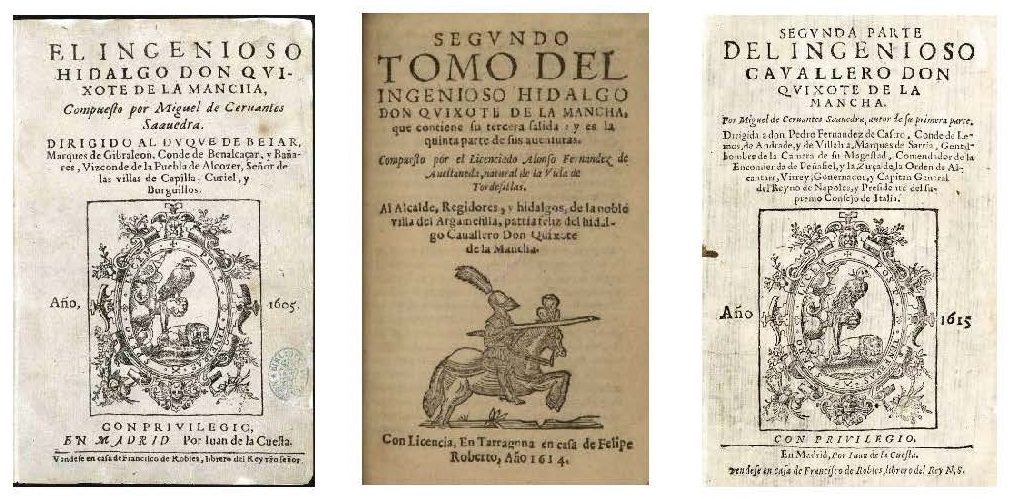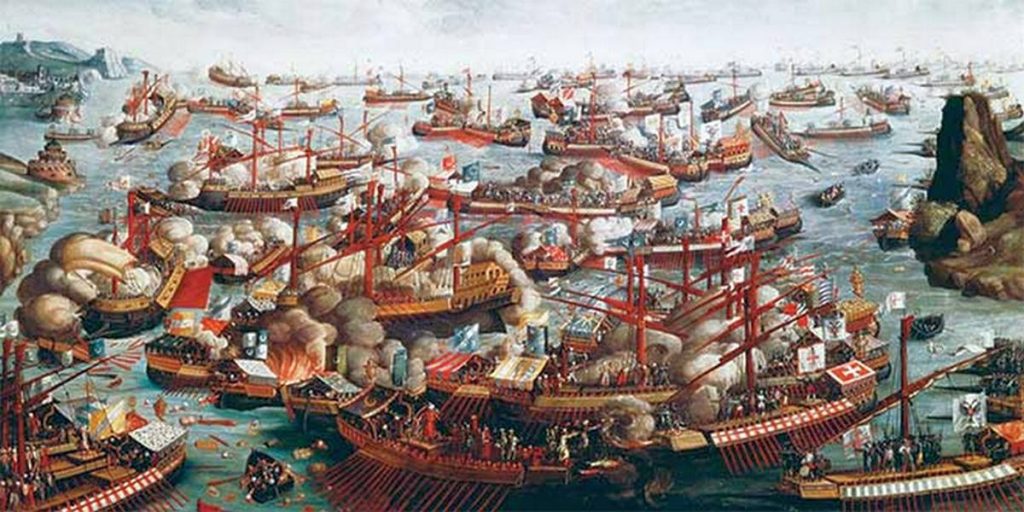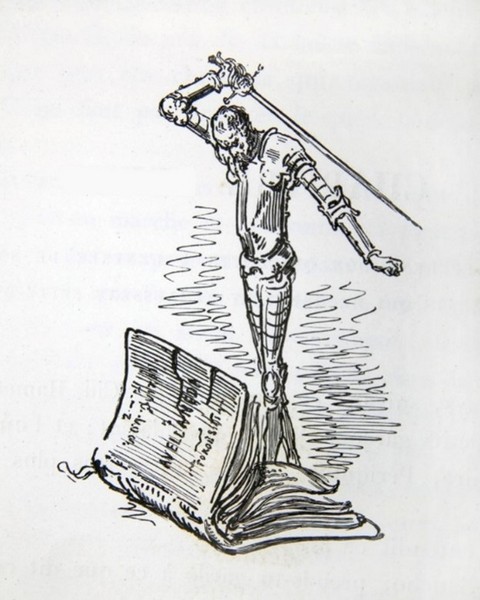2022

In 1605, when he was 57 years old, Miguel de Cervantes published the first part of Don Quixote, which is considered to be one of the most important and influential works in world literature. In all likelihood, Cervantes did not intend to continue his work. However, in 1614 an apocryphal sequel to Don Quixote was published, signed under the false name of “university graduate Alonso Fernández de Avellaneda, from the town of Tordesillas” (a town in the region of Castile), in the prologue to which Cervantes himself was attacked. As a result, Cervantes was forced to respond to Avellaneda by writing the true second part to Don Quixote (1615), which has been seen as Cervantes’s masterpiece.
The conventional interpretation
In the prologue to the second part of Don Quixote, Cervantes accuses the name and place of origin of Avellaneda as being false: “he does not dare appear in an open field under the clear sky, but rather conceals his name and disguises his home town, as if he had committed high treason”.
The identity of Avellaneda has been seen as the greatest mystery in Spanish literature. In an effort to clear up the mystery, the most diverse hypotheses have been put forward, many of which are absurd. This has led to many people believing that it is impossible to unearth the truth.
In 1614, when Cervantes had written the first 58 chapters of the second part of Don Quixote, he was aware that the apocryphal version had been published. Cervantes mentions Avellaneda’s book in chapter 59 of the second part, which contains 74. Since the first 58 chapters contain clear allusions to Avellaneda’s Don Quixote, it has been assumed that Cervantes made changes to them in order to refer to the apocryphal work.
As a result, scholars tend to say that there is insufficient evidence concerning the identity of Avellaneda, and that Cervantes wrote the first 58 chapters of the second part of his Don Quixote before learning of the apocryphal version. Nevertheless, both claims are false, and we are now in a position to know what really happened.
Cervantes and Pasamonte
In the first part of Don Quixote, Cervantes clearly attacked two figures: the successful Spanish playwright Lope de Vega and Jerónimo de Pasamonte. The latter was a soldier from the region of Aragon who took part, as did Cervantes, in the battle of Lepanto (1571).

Martín de Riquer, an academic at the Royal Spanish Academy of the Language, cautiously proposed that Jerónimo de Pasamonte could be Avellaneda, and other discoveries have confirmed his intuition.
Cervantes behaved heroically in the battle of Lepanto since, despite being ill, he insisted on fighting and was eventually wounded several times.
Shortly afterwards, in 1574, Pasamonte was taken prisoner by the Turks and spent eighteen years in captivity, being forced to row as a galley slave on a Turkish galley. Upon his release, he returned to Spain and finished his autobiography, known as Life and Works.
When writing about the capture of La Goleta (1573) in his Life and Works, where there was in fact no actual battle, Pasamonte claimed to have acted as heroically as Cervantes at the battle of Lepanto. Pasamonte circulated copies of his autobiography in manuscripts (in other words, in hand-written bound books, which was very common at the time, and which were passed around from person to person).
Cervantes read it and after seeing how Pasamonte had usurped his heroic deeds, satirised it in the first part of Don Quixote, turning him into Ginés de Pasamonte, the galley slave, who is presented as a liar, a cheat, a coward and a thief, and by having him gravely insulted by Don Quixote and Sancho.

The revenge of Pasamonte
This is undoubtedly how things happened: Jerónimo de Pasamonte read the first part of Don Quixote, and sought to take revenge on Cervantes. To do this, he subsequently wrote a sequel to Don Quixote with the intention of robbing Cervantes of his earnings from the second part. In order not to be linked to Cervantes’ galley slave, he then signed it under a false name.
In his prologue, Avellaneda pointed out that Cervantes, in the first part of Don Quixote, had attacked two people; Lope de Vega and himself, and that the offence against his person had been made through “voluntary synonyms”, which is undoubtedly a reference to the name and surname of Ginés de Pasamonte, which were so similar to those of Jerónimo de Pasamonte.
In his work, Avellaneda praised the Brotherhood of the Blessed Rosary of Calatayud (a town in Aragon). This is a key fact since it indicates that Avellaneda had heard of this brotherhood and that he held it in high esteem.
None of those who have been put forward as possible authors of the apocryphal Don Quixote could have been aware of the existence of said brotherhood nor would they have had any reason to praise it, with one sole exception; the man from Aragon, Jerónimo de Pasamonte, who explained in his Life and Works that he had joined the brotherhood at age thirteen, and that he had always held it in the highest regard.
Cervantes reads his sequel
Towards 1611, Avellaneda circulated copies of his apocryphal manuscript. Cervantes read it and quickly recognised the true author. In 1613, when he was 66 years old, Cervantes published his Exemplary Novels. In some of them, he made clear joint references to Pasamonte’s manuscripts of Life and Works and to Avellaneda’s Don Quixote. Cervantes mocked the episodes and expressions in the two manuscripts in order to show that they belonged to the same author.
These insinuations show two things:
Firstly, Cervantes was familiar with the manuscript of the apocryphal Don Quixote prior to writing the second part of his own Don Quixote (which certainly spurred him to write it).
- Secondly, Cervantes believed that Avellaneda was Pasamonte. In the unlikely event that Cervantes was mistaken, his conviction would still prove essential for understanding the second part of his Don Quixote.
Cervantes imitated his imitator
At that time, there was no such thing as author’s rights, and Cervantes would have been unable to take legal action against Avellaneda for having continued the first part of Don Quixote. As a result, and as he was getting old, he was forced to write the true second part of Don Quixote. In order to take his revenge on Avellaneda, he decided to do the same thing as the former had done: Cervantes imitated Avellaneda’s episodes of Don Quixote.
When composing the real second part of Don Quixote, Cervantes had before him Avellaneda’s manuscript. He did not want to mention the manuscript so as not to give it undue publicity, but he did use it. Cervantes did not simply write a mean-spirited imitation; quite the opposite, he opted to improve Avellaneda’s episodes, to poke fun at them and to amend those features which Avellaneda had endowed Don Quixote and Sancho with. The result of this imitation was an extraordinary work.
As a result, the whole of the second part of Cervantes’s Don Quixote is a satirical or corrective imitation of Avellaneda’s Don Quixote.
Cervantes hinted at Avellaneda’s true identity
When Cervantes was writing chapter 58 of the second part of his Don Quixote, he knew that the apocryphal Don Quixote had been published, meaning that the matter had taken on a more serious turn. As a result, he decided to mention it for the first time in chapter 59, and later harshly criticised it: “It is so bad that even if I were deliberately to write it any worse I would be unable to do so” (chapter 70).

Moreover, Cervantes hinted at Avellaneda’s true identity. At the end of the book, Avellaneda had announced that he would once again continue to write the history of Don Quixote, and Cervantes wanted to prevent this. He therefore inferred to Avellaneda that he knew his real identity, and that he could denounce him if he insisted on continuing with the history of Don Quixote.
In order to make it plain to Avellaneda that he had recognised him, Cervantes stated four times that he was from Aragon (aragonés):
…his tongue is aragonés (chapter 59).
…they truly thought that these were the real Don Quixote and Sancho, and not those who were described by their aragonés author (chapter 59).
I would bet that they have read our story and even that of the aragonés, which has recently been printed (chapter 61).
…the second part of the history of Don Quixote de la Mancha, not written by Cide Hamete, its first author, but by an aragonés, who says he is from Tordesillas (chapter 70).
Above all, he pointed to Avellaneda’s real first name. In chapter 59, Don Quixote meets a character who has in his hands the recently published apocryphal book. On seeing Cervantes’ Don Quixote, this character recognises him as the real one:
You are, sir, without doubt, the true Don Quixote de la Mancha, guiding light and morning star of knight-errantry, despite and in defiance of him who has sought to usurp your name and to bring to naught your achievements.
You can imagine the name of the figure in whose hands lies Avellaneda’s book, and who recognises Cervantes’ Don Quixote as the true one. Of course: the character is called Jerónimo, like Jerónimo de Pasamonte. Cervantes thus created a masterly scene, making the literary representation of Avellaneda, personified in the character known as Jerónimo, recognise his Don Quixote as the true one.
Thus, when Pasamonte came to read the true second part of Cervantes’ Don Quixote, he would understand that the latter had recognised him, and could disclose his identity. In the final chapter of his work, Cervantes asked Avellaneda not to continue the history of Don Quixote. In this way, Cervantes offered to strike a deal with Avellaneda: if the latter did not continue the history, his identity would remain safe; but if he insisted on continuing, Cervantes might then reveal who he really was.
Fortunately, Cervantes was able to culminate and publish the true second part of Don Quixote at the end of 1615, when he was 68 years old. We are indebted to Avellaneda for having inspired Cervantes to pen the work.
A few months later, in April 1616, Cervantes died.
Avellaneda did not continue the history of Don Quixote.

In sum, Cervantes drew on the apocryphal Don Quixote to write the second part of his Don Quixote, showing his conviction that Avellaneda was Jerónimo de Pasamonte, the man from Aragon. It has taken us a long time to discover this. Let us hope that it does not take long for students and society as a whole to find out what really happened.
University of Valladolid (Spain)

* A first version of this article was published in Spanish in The Conversation (March 22, 2019): “Cervantes y el Quijote apócrifo: ¿Quién fue Avellaneda?”.
